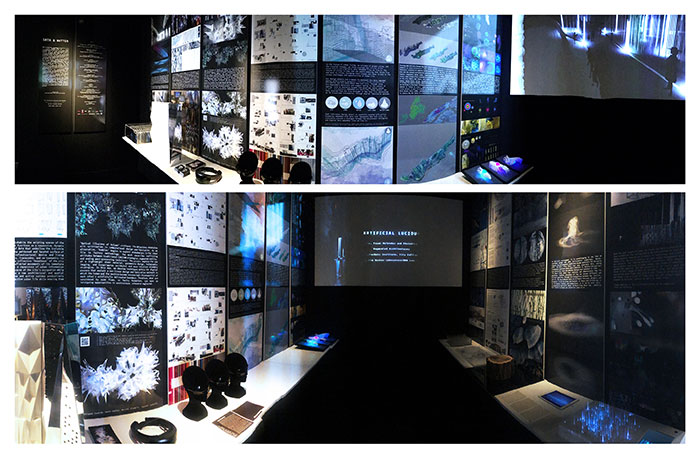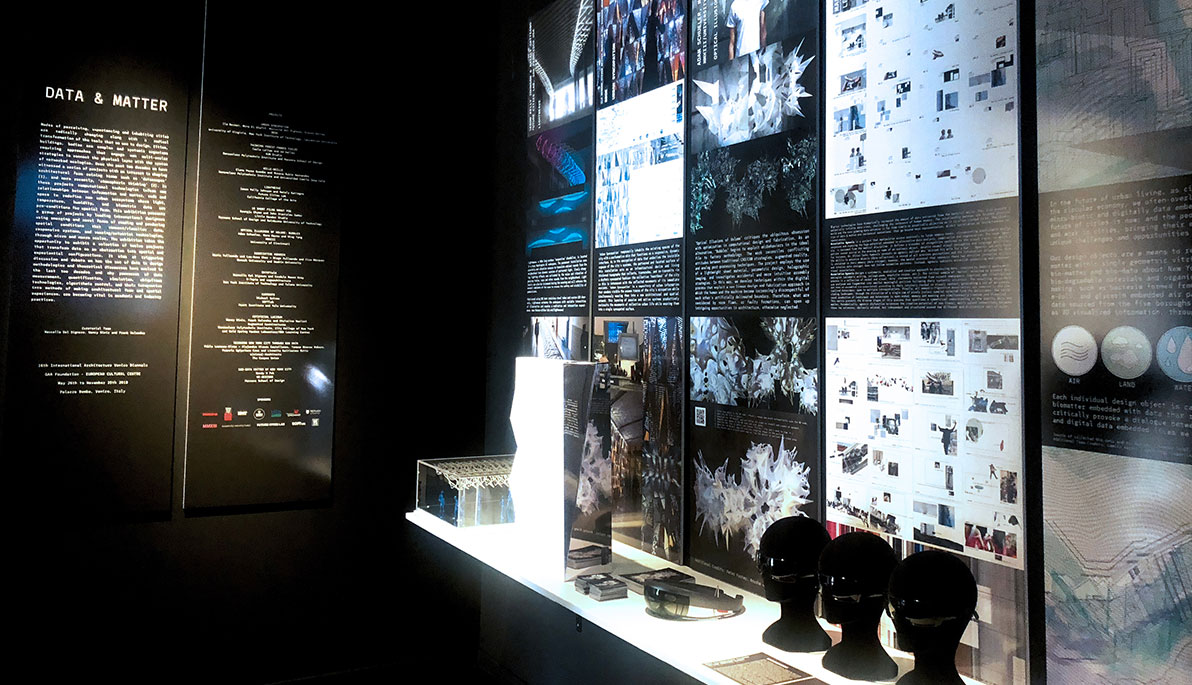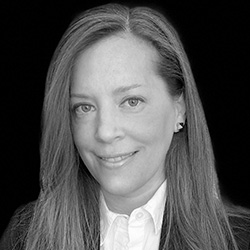News
Q&A: Marcella Del Signore on “Data and Matter” and the Venice Architecture Biennale
June 21, 2018
Pictured: Data & Matter features the works of 12 groups. Each project transforms data into abstract spatial and experiential configurations.
NYIT School of Architecture and Design Associate Professor Marcella Del Signore is co-curator of Data & Matter, an exhibition currently on display through November 2018 during the Venice Architecture Biennale. Hosted by the European Cultural Center and the GAA Foundation (a Dutch non-profit organization that aims to raise awareness of the arts, architecture, and culture), the exhibition looks at ways that data is used in spatial configurations within inhabitable spaces and larger landscapes. “Modes of perceiving, experiencing and inhabiting cities are radically changing along with a radical transformation of the tools that we use to design. For instance, light conditions, temperature, and sound create an experience in a space. By quantifying these senses as something that can be measured, a designer can reformulate the connection between information and matter,” said Del Signore. “All of the projects in the exhibit relate to how data informs design…It is the starting point for the design process.”
Del Signore sat down with The Box to talk about the exhibition and her work.
What is the Venice Architecture Biennale?
It is one of the most important exhibitions related to architecture in the world. Every two years a theme and curators are chosen to reflect on a particular theme; a series of architects are invited to respond to that theme as part of the exhibition itself. Me and the other two curators, Nancy Diniz from Rensselaer Polytechnic Institute and Frank Melendez from City College, were invited by the European Cultural Center to be part of this year’s exhibition during the Biennale.
Tell me about Data & Matter.
The exhibition features a group of projects by leading international designers, architects, and academics using emerging and novel forms of reading and producing spatial conditions (spaces with different scales and configurations) that connect/visualize data, responsive systems, and sensing/actuation technologies, through micro (inhabitable spaces) and macro (larger landscape) scales. Each of the projects in the exhibition transforms data into abstract spatial and experiential configurations. In other words, ways one uses and experiences space.
The exhibit is meant to trigger discussion and debate on how the use of data in design methodologies and theoretical discourses has evolved in the last two decades as well as why methods of data measurement, quantification, simulation, ubiquitous technologies, and algorithmic control are used to create architectural form and spatial experiences and how they are becoming vital in academic and industry practices.
Why did you choose this topic?
I am interested in the topic of data not in terms of the form of quantitative perspective, but in regards to the spatial and material implications that data could produce within architecture and design. The exhibition isn’t trying to be a pure catalog of projects that use data as a generative [method], but rather shows how data has the potential to trigger questions relative to how we operate in the contemporary field of design—vis-à-vis emerging/digital technologies.

Projects on display at Data & Matter during the Venice Architecture Biennale.
Why is it important to explore how data can be used in the design process?
Over the last ten years, there has been an increase in big data and how it informs politics, economics, culture, and spatial practices. This is the reason why we concentrated on data and matter and how it informs reality.
Data can trigger generative processes in design—particularly in terms of how information is created and how matter is informed in the physical sense. With the emergence of computational design, coding, responsive systems, and digital fabrication, the notion of data and how it is used (or misused) is a relevant topic of exploration within the discipline of architecture and design in general.
In your exhibition, you show how light, temperature, humidity, and biometric data are “preconditions for spatial form.” Can you elaborate on that?
How a space is perceived (through light conditions, temperature, and sound) creates an experience. [That experience] can also be quantified, and the resulting data can be used to trigger modes in which we design.
You co-curated Data & Matter with Nancy Diniz and Frank Melendez. How was it working with them?
I worked with both of them two years ago at a summer course titled HyperCities in New York that explored the connection of data, sensing technologies, and urban spaces. We extended our collaboration on the Data & Matter exhibit.
We selected 12 groups to respond through ONE project to the exhibition brief and then selected participants based on the work they have done both in academia and practice related to data, matter and computation. Almost all the participants are academics and are affiliated with universities.
After Venice, we hope to take our exhibit to other cities. We also hope to continue working together and turn the exhibit into a book proposal that deals with data, matter, and computation.
This was your first time exhibiting and curating an exhibit at the Venice Architecture Biennale. How has the experience been?
It’s exciting to be invited and be a part of it. It is not only a way to advance my research, but also to advance my research within NYIT and contribute to the university’s focus on technology and innovation.
Can you talk about your projects on display at the Biennale?
DATAField is a project that invites New Orleans community members to engage with water-related issues through a 3-D visualization of the city’s water infrastructure.
I also have a project on display called Urban Syncopation that I designed with Ila Berman, Mona El Khafif, and Steven Beites. It is a performative skin that functions as a responsive, dynamic interface that collects, transcodes, and re-transmits the collective “heartbeat” of the sounds of downtown Toronto. The project was selected to be part of an exhibit at the Gardiner Museum and was one of the five best projects of Nuit Blanche 2016 in Toronto.
This interview has been edited and condensed.





